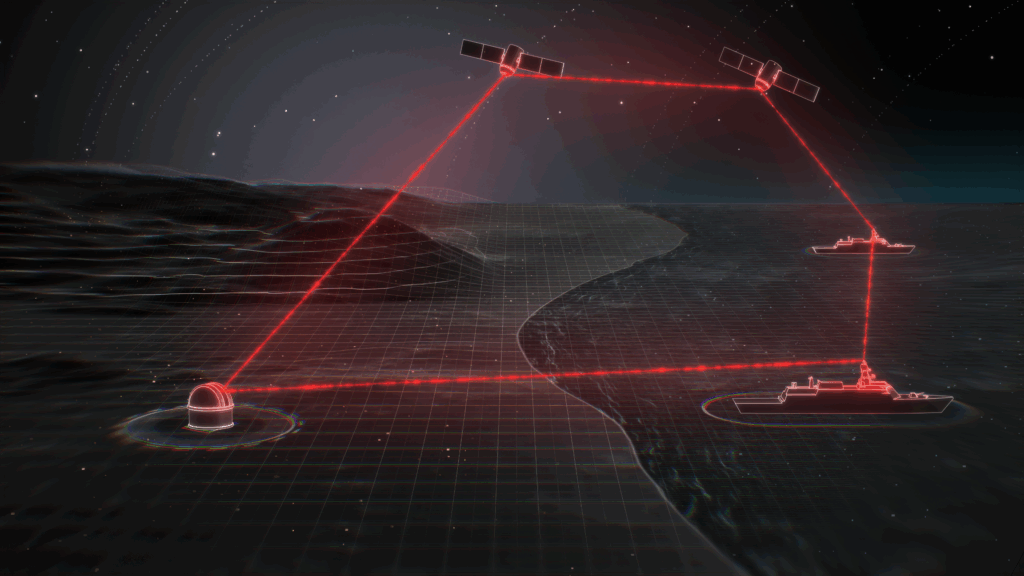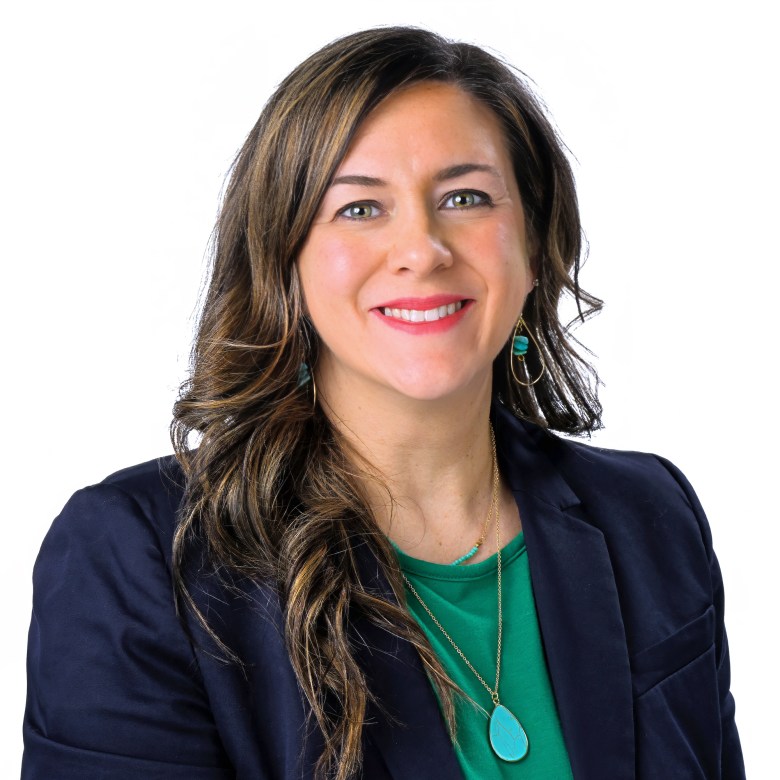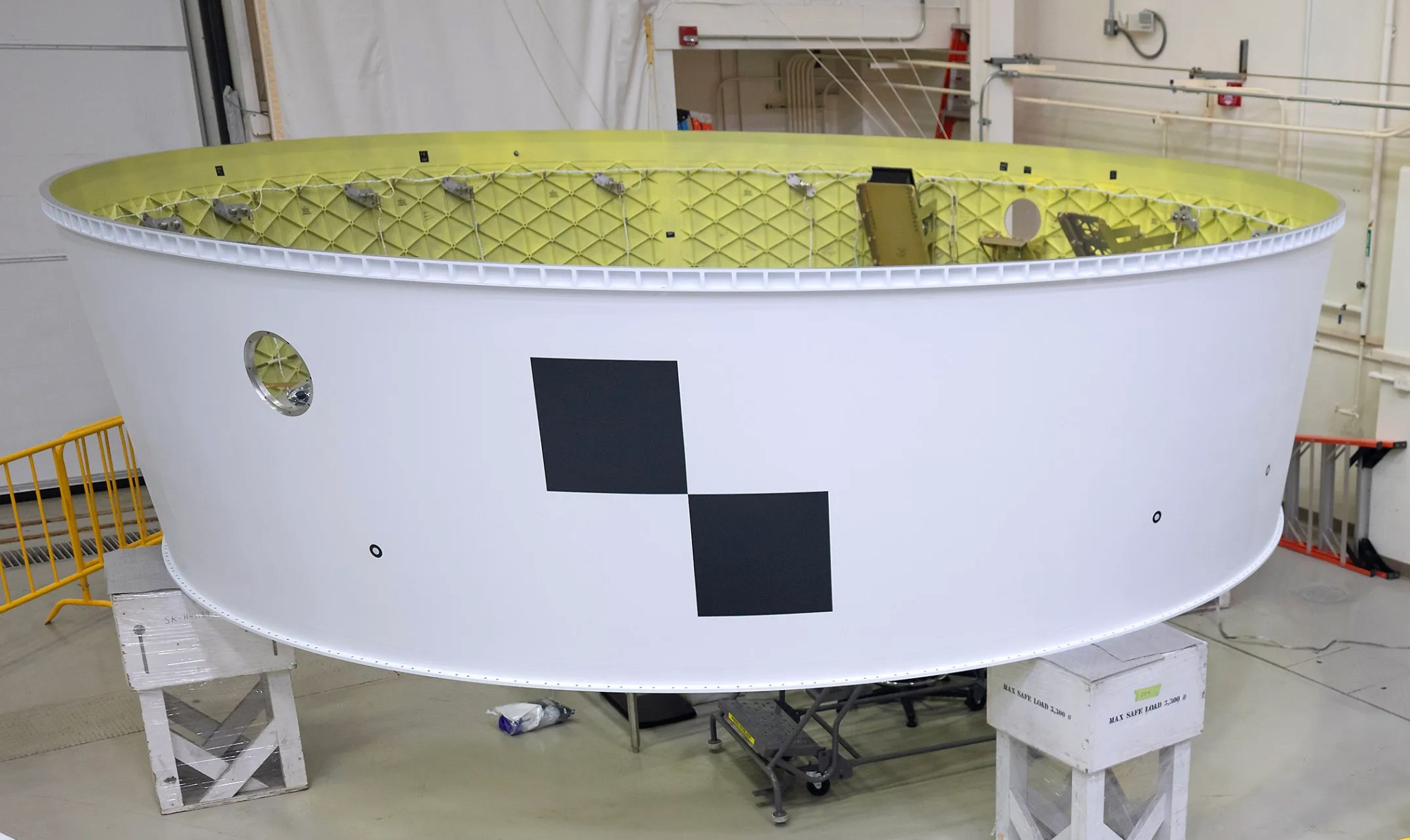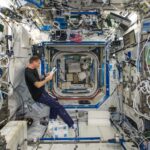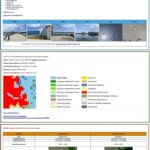Now Reading: Sir Martin Sweeting and the rise of the small satellite industry
-
01
Sir Martin Sweeting and the rise of the small satellite industry
Sir Martin Sweeting and the rise of the small satellite industry
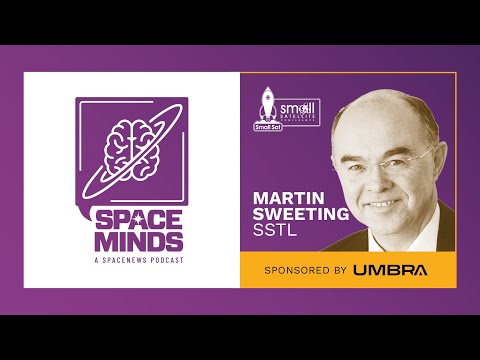
This week SpaceNews is at the SmallSat Conference in Salt Lake City, Utah. In this episode of Space Minds, host Mike Gruss speaks with Professor Sir Martin Sweeting, Executive Chairman of Surrey Satellite Technology Limited and a professor at the Surrey Space Institute of the University of Surrey.
They discuss the growth of the small satellite industry from its first meeting in 1987 of just a few dozen participants to today’s nearly 5,000 attendees, and preview the key issues the community will address at this year’s conference.
American-made. Umbra-rated. Delivered faster. Umbra is reshaping what’s possible in and through space — one component, satellite, and image at a time. We design, build, and operate the most capable radar constellation in the market, delivering unmatched access, clarity, and resilience for critical missions. Operating at every layer — from sensors to spacecraft to software — we accelerate innovation and operational advantage for those who can’t aIord to wait. Now, through our new Space Systems line, we oIer the same trusted, flight-proven hardware we use ourselves — engineered for power, precision,resilience, and control. Built to endure. Designed to deliver. Umbra puts control where it matters most.
Show notes and transcript
Click here for Notes and Transcript
Time Markers
00:00 – Episode introduction
01:01 – Welcome
01:25 – The first SmallSat conference
02:35 – SmallSat’s and space science
04:21 – The SmallSat size, power, capabilities and costs debate
05:47 – Market direction
06:33 – Advice and changes
08:07 – On reliability
08:54 – A special project
11:47 – Short-term future
12:33 – The launch situation
13:38 – Ice cream
Transcript – Sir Martin Sweeting Conversation
Mike Gruss – Hi, I’m Mike Gruss with SpaceNews. And welcome to our space minds podcast from SmallSat with support from Umbra. Today, I’m joined by Martin Sweeting, who is the chairman of Surrey Satellite Technology and also a professor at the Surrey Space Institute. Martin, thanks so much for joining us. Oh, it’s a real pleasure. This is going to be a busy week for the space community, but I wanted to start by saying we’re here in Salt Lake City. This is the first year that small sets been in. So like, say you were at the first small set. What does it mean to have this evolution? And what does it say about the industry that it’s it’s now in this giant convention center?
Martin Sweeting – And Well, indeed, I mean, back in 1987 at the first meeting, it was, if I remember correctly, there was something like 35 people in one room, and it was considered a bit of a sort of a hippie convention of people talking about small satellites when, you know, the conventional space industry said, Well, yeah, small satellites will never do anything of any use. And so to see how it’s evolved from roughly 30 to what is it now? 6000 or something. 4400, I believe, yeah, nearly 5000 so, I mean, that’s amazing. And what that shows is how the whole small satellite capability has evolved during that time, from something which was interesting, but nobody could see any use for it, through to today, where it’s actually probably a parallel stream in the whole of the major space industry.
Mike Gruss – We’re going to talk about some of the issues that the small satellite community is looking at this week. But I wanted to start with you were just at the keynote speech from NASA’s Nicky Fox, who I think you have a personal connection with. Let’s tell me a little bit about that, and also tell me what some of the takeaways were from from that keynote that you heard. I
Martin Sweeting – have to say. You know, personal connection is very weak. Yes, when, when Nikki did her MSC at the University of Surrey, I was then lecturing on that course, so quite possibly, she suffered my but no, the keynote is really interesting because, of course, being at small sat what Nicky did was to focus very much on the role of SmallSats in NASA’s exploratory programs. And again, highlighted the point that NASA, of course, addresses some of the huge questions in space science, not just looking out, but also looking down at Earth. And of course, has some enormously impressive large satellite missions. But alongside those now there’s this whole raft of small sat missions which are contributing substantially to the space science agenda, and indeed, what they can do is to, as I think Nikki highlighted very clearly, was that that was an opportunity to fly individual payloads and sensors on a raft of small satellites, where before they tended to be aggregated into one large mission. This means that they’re more frequent opportunities. You can try out new sensors. They can be used to give us slightly different perspective on Space Science because of a distributed spatial positioning and so small SATs now are very much alongside NASA’s mainstream flagship missions.
Mike Gruss – That kind of segues nicely into one of the topics that I think will be, I think it’s probably always a theme at small set, which is, you know, weighing size, cost, power, capability. How is that debate kind of evolving, and where do you see it? Where do you see it going right now?
Martin Sweeting – Well, there was, I think, right from the very beginning, this sort of discussion about, well, if you have a really small satellite which has limited physical envelopes, so it has limited power, can carry limited aperture payloads and so forth, what can it do that is useful? And back in the mid 90s, I think it was or early 2000s with one of my PhD students, we had a look at well, if you try to find the optimum size for a small satellite, which is a combination of cost, mass launch, cost, aperture and power generation, what is the peak of utility? And it turned out that that peak is round about the 50 to 100 kilo region. And so we’ve seen a whole range of small satellites from the CubeSats way down in the 10 kilo range, which are very good for training and perhaps for developing and improving some early payload technologies. Right the way up to the sort of micro satellites and mini satellites which are carrying out more operational and useful…
Mike Gruss – We’re seeing a little bit of more of a market for that right now. Seriously. Yeah, yeah, yeah. And so what do you expect? Kind of, let’s say, in the next couple of years, where do you see the market going, in both directions, smaller and larger.
Martin Sweeting – I think if you look in recent years, the drift has been slightly larger, so not to the huge but to go up from what we’re perhaps traditionally, the 10 kilo sort of nano satellites and cube sats, which had limited utility. I mean, they were still good for training in particular, but for operational utility a little bit limited. So now the sort of 50, 100, 200 kilo satellites are really the sweet spot on the whole for getting good utility, still at low cost and rapidly. And that’s, I think, the mix that we need to try to achieve.
Mike Gruss – It’s a very crowded exhibit floor. Downstairs. There’s a lot of new entrants. When, when you’re chatting with some of these folks, what do you what do you tell the what do you tell them about the space industry, and what, kind of advice do you give them, broadly about what success looks like?
Martin Sweeting – I mean, it’s interesting that, because we’re now holding it in Salt Lake City, compared to at Logan, it’s actually not quite so crowded. There’s a lot more people, but there’s a bit more room to move around and talk about. I think the key is two things. First of all, supply chain, because which is always an issue, which is always an issue. And also, not just the sort of technical supply chain, but the skills supply chain, because that’s one of the real challenges. So there’s been a huge, I was going to say explosion, maybe that’s not the right descriptor, but expansion, shall we say, of small satellite, subsystems, payloads, platforms, busses, in the last couple of years, and that’s, I think, going to just continue. And the big change has been in moving from relatively unproven cots technologies, where the reliability 10 or 15 years ago was a little bit suspect for some of the small satellite small satellites. Through now to having small satellites which achieve high reliability, high performance and longevity, and I think that’s been the big change. And so talking to people on the floor, I think it’s looking for those sort of components and subsystems that support that with heritage.
Mike Gruss – And I think reliability that you brought up, that’s one of the key themes that I know our team of reporters is looking for this week, is, is, how does that play out? What does it what does it look like for?
Martin Sweeting – Well, I think small satellites had a little bit of a bad press. Yeah, again, going back 10 years or so, yes, people say, Well, yeah, they’re great and small and cheap, but they don’t get good reliability. I think that that myth has been broken now, because small satellites now have operational lifetimes of 10 years or more, depending on the orbits and what they’re trying to do. And I think that’s been one of the key breakthroughs that’s allowed small satellites to sort of sit right alongside the big satellite missions, doing different things and the different sort of flavors and everything else but adding that additional dimension and being essentially the other half of the current space program.
Mike Gruss – One thing I wanted to talk about is what the future, what you are envisioning the future to look like, and I know you’re working on a project that’s a little further out. I was thinking more in the three to five year range, but tell me about this long term project that you’re working on.
Martin Sweeting – If we look right into the distance quickly for a moment, for the last couple of years, I’ve been leading a study for the UK Royal Society, which is the UK Academy of Sciences, looking at the potential implications of space in the year 2075 now we’re never going to better predict what happens by then, because that’s hopeless. But if we just look at the direction of travel, of current space activities and sort of project ahead, we can start to think about some of the potential implications on society, on industry, on governments as well, in terms of what the policies and the concept of that was, if we, if we think back to the, let’s say, the 80s and the the beginning of the Internet era, we didn’t really think hard about what that was going to mean the digitalization of society. So now, if we can stop and think a little bit about how space is evolving, maybe we’ll be better prepared for some of the challenges that come up.
They’re not just technical, they’re ethical, they’re they’re legal policy. You know what happens? For example, looking ahead, you know, for if we do have humans on Mars, if we, if we do procreate on Mars, we have babies on Mars, what does that mean? Ethical issues, as well as the issues that I’m closer to, which is the technology that, yeah, when they come there. So of course, that’s 50 years ahead, if we come back, as you suggested, to perhaps the next 10 years even that is difficult to predict, but I think what we can see is that the tempo of space activities is picking up exploration going back to the moon. It. Exploring and having human sustained human habitation on the moon, perhaps moving to in orbit manufacturing, where we can take advantage of the orbital environment to produce materials we can’t do so on Earth, and eventually having a lunar economy, which in its own way, will prepare for the next step towards Mars. Now is that 510, 15 or 20 years ahead? Always difficult to predict, but I think we’re going in the near term. I suspect the first steps will be in orbit manufacturing. That would probably be the next sort of thing that we see, which is substantial change, and I think that’s going to be enabled by the launch developments in the launch business. Starship will allow very large masses to be launched into orbit at a much lower cost with greater volume. And that will enable such things as in orbit manufacturing and…
Mike Gruss – How about about for the small satellite community. How do you see that evolving in the next in that short term period, not 2075.
Martin Sweeting – Well, it’s sort of interesting, because if you, if you now say that we’re not restricted by mass and launch costs, which starship will actually remove, then perhaps the impetus for physically small satellites will also be removed. And so it may be that we will use some of the same technologies for small satellites, but on larger platforms, and again, the implications of AI and other technical developments in order to make these, these space missions more capable, but not necessarily so small. So it’ll be very interesting see small sat in 10 years time. Is it actually SmallSat, or is it sort of something different?
Mike Gruss – Larger? Yeah, you brought up launch. That’s, I think, always an issue for the small sat community, in particularly having those options and those potential rides to space. What are you looking for this week? Or what? What have you been looking for, maybe the last 12 to 18 months, and seeing how that situation has evolved?
Martin Sweeting – I mean, launch is always the key ingredient, because having accessible launch at low cost, reliable, of course, but also easy to book. And that’s something that SpaceX has really changed the nature of the game. And if I’m looking ahead, what do we want to see in the next 12 months? I would like to see a few more players in that field, because at the moment, SpaceX is a very strong and dominant position. We have new players coming up, but they need a little bit of time to become established and hopefully provide a bit more of a market at the in the launcher business, particularly for small satellites. But not only small.
Mike Gruss – No. Last thing I wanted to talk about, which is something that always comes up when we’re talking about small sat Conference, which is the ice cream, ice cream. So tell me a little bit about that and why you’re excited about it, and maybe have been for a long time.
Martin Sweeting – Yeah, indeed. Well, I’m very fond of ice cream, so I have to declare a bias and this and this year, in order to do that, it’s actually our 40th anniversary of space from Surrey, and so we’re sponsoring the ice cream. And of course, it’s a hot place. Utah is hot, so ice cream in the afternoon is a very, very welcome relief, and we’re very happy to be sponsoring that today from SSTL.
Mike Gruss – Yeah, that’ll be fun. Well, great, Martin. Thanks so much for joining us. I’d like to thank our sponsor again, Umbra. All of our coverage from small set this year is available at space news.com we also, if you’re here in Salt Lake City, we have show dailies this week, and our August issue is also on the newsstand. Thanks so much for joining us.
About Space Minds
Space Minds is a new audio and video podcast from SpaceNews that focuses on the inspiring leaders, technologies and exciting opportunities in space.
The weekly podcast features compelling interviews with scientists, founders and experts who love to talk about space, covers the news that has enthusiasts daydreaming, and engages with listeners. Join David Ariosto, Mike Gruss and journalists from the SpaceNews team for new episodes every Thursday.
Watch a new episode every Thursday on SpaceNews.com and on our YouTube, Spotify and Apple channels.
Be the first to know when new episodes drop! Enter your email, and we’ll make sure you get exclusive access to each episode as soon as it goes live!
Space Minds Podcast
“*” indicates required fields
Note: By registering, you consent to receive communications from SpaceNews and our partners.
Stay Informed With the Latest & Most Important News
Previous Post
Next Post
-
 012024 in Review: Highlights from NASA in Silicon Valley
012024 in Review: Highlights from NASA in Silicon Valley -
 02Panasonic Leica Summilux DG 15mm f/1.7 ASPH review
02Panasonic Leica Summilux DG 15mm f/1.7 ASPH review -
 03How New NASA, India Earth Satellite NISAR Will See Earth
03How New NASA, India Earth Satellite NISAR Will See Earth -
 04And Thus Begins A New Year For Life On Earth
04And Thus Begins A New Year For Life On Earth -
 05Astronomy Activation Ambassadors: A New Era
05Astronomy Activation Ambassadors: A New Era -
06SpaceX launch surge helps set new global launch record in 2024
-
 07Space Force plans new ‘Futures Command’ amid pressure to speed up modernization
07Space Force plans new ‘Futures Command’ amid pressure to speed up modernization














